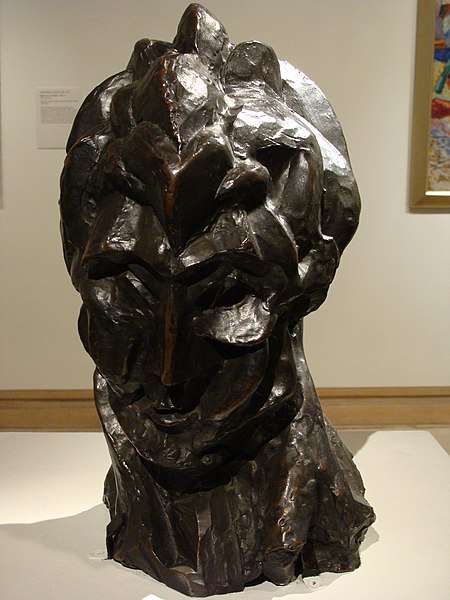“There is art that looks like something. There is art that sort of looks like something. And there is art that looks like nothing but itself.” –The Berenstain Bears

http://en.wikipedia.org/wiki/File:Albert_Gleizes,_l%27Homme_au_Balcon,_1912,_oil_on_canvas,_195.6_x_114.9_cm,_Philadelphia_Museum_of_Art.jpg
Man on a Balcony, by Albert Gleizes, sort of looks like something. It is definitely not a realistic portrait, but there is no doubt that it depicts a person leaning on a railing. The man is distorted by a chaotic array of shapes and colors. This “sort of” realism is a theme that I noticed in a lot of the Cubist works at the Armory Show.

http://en.wikipedia.org/wiki/File:Womans_Head_Picasso.jpg
PIcasso’s Head of a Woman looks vaguely like a woman. It also might remind someone of a mountain, Medusa, or an artichoke (thanks Antonio). Most interestingly, Head of a Woman looks like rock. A lot of sculptures use their medium as merely a tool to represent their subject. The wood, marble, or clay is not important in and of itself. But Picasso carved his piece so that the rock was just as significant, if not more significant, than the woman it portrayed.
It’s easy to imagine the confusion of those who encountered Cubism in its infancy. Isn’t the point of a sculpture to make it look like something? If you focus on the raw material, how is that even a sculpture? Why would you take a nice painting of a man and distort it so it looks like shattered glass? The works of Picasso and Gleizes have shock value. That shock is most potent when you realize how different Cubist works are from typical paintings and sculptures.
(Sorry if I butchered the quote in the introduction. I can’t find the original.)


Tamar,
This is excellent. Far from butchering the quotation (who cares whether it’s exact or not in this case) you have caught the reader’s attention. Your comments on the works of art are incisive, intelligent, and evoke the experience of looking these objects with great care. Your writing is concise. Most importantly, you have understood something essential about early 20th century art. Well done!